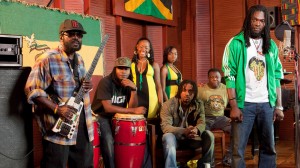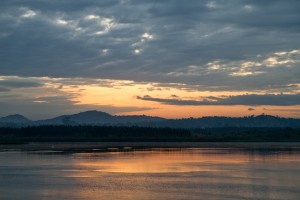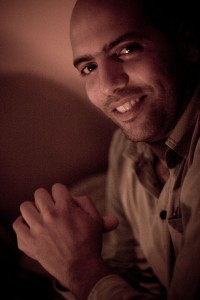
A soprano opera singer and a vibraphone comprise an unlikely musical pairing, especially when set against the backdrop of Transylvania’s largest mountain.
In August 2015, genre-breaking Romanian band Zmei3 brought their unique style of blues- and soul-influenced music to a region best known for its folk traditions.
Taking their name from a mythical dragon, the band crowdsourced funds to fly Grammy award-winning producer Ian Brennan to Transylvania to record their debut album Rough Romanian Soul (April 2016, Six Degrees Records).
Brennan collaborated with singer Paula Turcas, vibraphonist Oli Bott, guitarist Mihai Victor Iliescu, and double bassist Arnulf Ballhorn to record the album’s 15 beautifully raw-sounding tracks—many composed and performed for the first time on location.
Ahead of the band’s performance in the July 2016 WOMAD festival, Brennan spoke with Apsara about the process of working with Zmei3 and about the band’s innovative take on tradition.
Your work as a producer has spanned many different countries, including Zomba Prison Project, your recent Grammy-nominated album focusing on prisoners in Malawi. How did you first connect with Zmei3?
They reached out to me. Over the course of a year, we corresponded and then finally met in person and ultimately set a course for their debut album.

Rough Romanian Soul was recorded in the Transylvanian mountains, and you traveled to Romania to work with Zmei3. How did that environment influence the album?
I set Paula up so that she could look out over Romania’s main mountain, Mt. Omo (“Mount Man,” since it is claimed to look like a person lying prone), as she sang. We all slept and ate in the same building, so all energies were devoted to and in synch for the record for that week.
The members of Zmei3 come from diverse musical backgrounds. Singer Paula Turcas, for example originally sang soprano opera and Oli Bott’s vibraphone is the central instrument throughout the album. What was the process like of collaborating with these artists?
They all are united around the Romanian folk tradition. And Paula and Oli do an extraordinary job of using only the positive elements of their virtuosity and forgoing the rest to instead approach each song as “novices” putting truth before chops.
Although rooted in traditional Romanian music, Rough Romanian Soul is distinctly original and many songs describe life during or after the Communist era. What aspects of contemporary Romania do you feel the album captures?
The country of Romania is growing, but still has struggles. Many people—particularly in the north—continue to live in villages that are quite unchanged from earlier eras. Horse-drawn carriages are used, widows wear all black, and those who suicide are buried in separate graveyards. Zmei3 are classic in that they sound vintage and modern simultaneously, and they are able to achieve a timelessness that is rare.
In listening to Rough Romanian Soul, what would you most like people to take away from the music?
The physicality of the music is almost palpable. And emotional truth transcends language—you don’t have to know what someone is saying to understand what they “mean”…and if they truly mean it.
Zmei3 performs July 29th at WOMAD; Rough Romanian Soul is available from Six Degrees Records.
July 7, 2016, S.L. Bhatia





